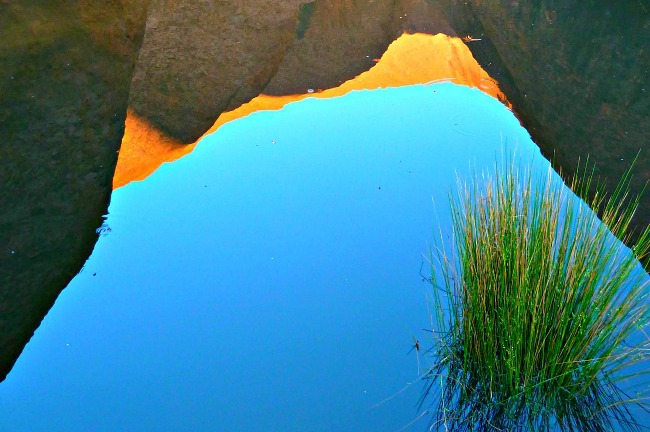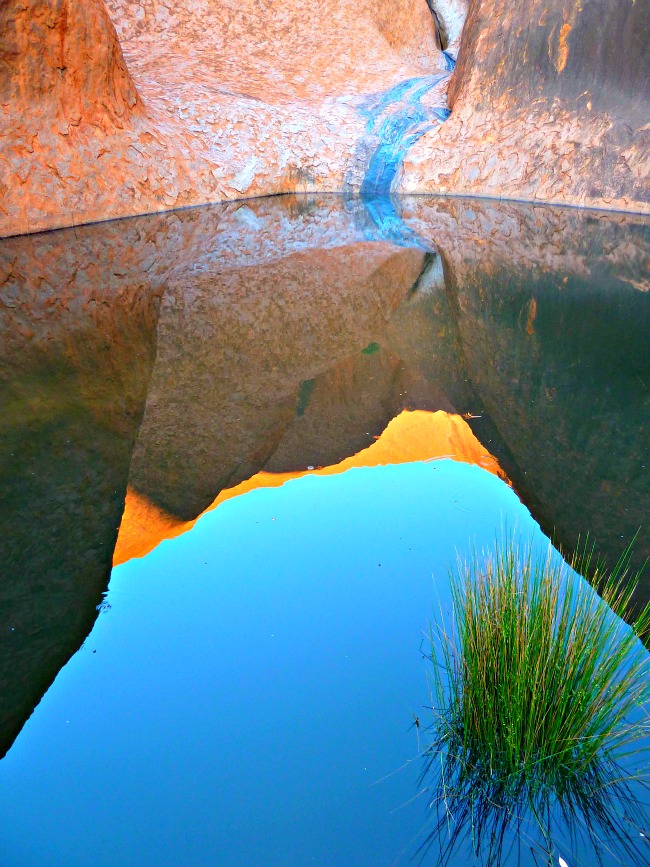COLOUR
Our world enjoys the full rainbow spectrum of fresh, vibrant, explosive, life-force colours.
Amazingly, there are only three primary colours ~ Red, Blue & Yellow – from which all other colours are mixed.
The complementary colours, often referred to as being on the ‘other side of the colour wheel’, are simply two of these colours being mixed together to complete the triad and create an ‘opposite’.
- Red‘s complementing colour is green (ie blue + yellow mixed together)
- Blue‘s complementing colour is orange (ie yellow + red mixed together)
- Yellow‘s complementing colour is purple (ie red + blue mixed together)
To revel in and relish these magnificent colours there’s a fun photographic competition happening!
Here is how I see and capture the colour 🙂
Ken: BLUE
“I’d like to see some clever use of blue in a photo. While it is not obligatory, I’d like to get your take on the word blue, the colour blue, a splash of blue that captures the attention of the viewer or any other interesting non obvious way of using blue in a photo. Of course any of your favourite photos with blue in them will do just fine, but try to be original!”
Blue to me is a holiday colour, and the blue and white stripped Breton shirt, whilst originally the uniform of French seaman as of 1858 (when it had 21 stripes – one for each of Napoleon’s victories), from 1917 became synonymous with the haute-bourgeois in holiday destinations such as St Tropez when Coco Chanel introduced it to the world of fashion as part of her nautical collection.
Blue is a cool refreshing colour that epitomizes down time –
Having bought baguettes, goats cheese and olives at the Goudargues market in Provence (also known as the ‘Venice of the Gard’ because of the canal watercourse that flows through it centre) the smell of freshly baked breads and pastries wafting from a patisserie sucked me in. I succumbed to a succulent fruit tart, which was savoured at a pavement café with a crisp chilled wine whilst soaking up the south of France sunshine.
Holiday mode at it’s best!
Abi: GREEN
“I’m looking for something unusual: an image from a place that makes me think of it in a whole new light. Show me something I’ve never seen before. Tell me about how the place relates to its people, their attitudes and their history. And make sure you had fun snapping it. Somehow, that always shows!”
This is Uluru.
The rusty coloured iconic monolith at the heart of Australia’s dry red centre. A mammoth red rock that’s been photographed a gazillion times, generally at sunset, when it’s changing hues go through the red, purple, blue part of the spectrum.
So where does the green come in?
Well… Did you know that tucked into the base of Uluru, in this central desert region of Australia, there are waterholes?
Waterholes that sustain life, and offer an unexpected startling splash of green in their midst!
This waterhole is called Kapi Mutitjulu.
The foundation of Anangu culture (the traditional owners of this land) is Tjukurpa (pronounced: chook-orr-pa), which has many deep and complex meanings. The knowledge never changes – It refers to the past when ancestral beings created the world, through to the present where a deep respect for the land is maintained – A caring approach to the precious commodities that the land gifts us with, and which we rely upon for our existence.
According to Anangu belief:
“After Minyma Kuniya defeated Wati Liru, her spirit combined with her nephew’s and together became Wanampi (water snake). Wanampi lives here today and has the power to control the source of this precious water”
Dave and Deb: YELLOW
“What I am looking for in the photos is a unique way for you to express the colours. Each colour should be an element of the photograph and not dominate the whole scene. I am looking for something beyond the clichés like a red sunset, blue sky or yellow flowers. For me originality will always take precedence over a pretty photograph.”
This lego-man graffiti street art was photographed in Uzes, in the south of France.
It seemed a little incongruous having such a modern addition to the ancient stonework of this medieval town, but graffiti street art is increasingly becoming a tourist attraction in it’s own right, possibly since Banksy made it fashionable.
As an example of how the world’s attitude to graffiti street art is changing, Melbourne City Council in Victoria, Australia has acknowledged that their city’s alley-way art has “become internationally renowned” and “an attraction for local and overseas visitors experiencing Melbourne’s creative ambience.” Recognising the importance of street art as contributing to a vibrant urban culture, the Council has guidelines on their website for both property owners and artists, so both can respectively co-exist.
How do you feel about the lego-man above? Is he an abhorrent intruder, or like a carefully crafted street sculpture an addition to the urban space that brightens your day and puts a smile on your face as you go about your business?
Christine: WHITE
“I love photos that tell a story. I want something that could have only been taken by you, in that moment, in that way. I love it when a photo captures a place so well that even if I’ve been there before, I think to myself, wow, I have to go there.”
This image doesn’t scream, come and visit me, but it does convey high tech, modern, strong, orderly, efficient, and with a clock – on time – all of which are excellent attributes if you’re planning on taking one of France’s TGV trains (TGV = Train à Grande Vitesse, meaning high-speed train) that regularly reach 320 km/h (200 mph).
This is Charles de Gaulle TGV railway station, that adjoins Paris – Charles de Gaulle Airport.
Having flown half way around the world from Australia to France at 85% the speed of sound (about 900 km/h or 560 mph at cruising altitude), with over 500 other passengers in the 6.5m wide cabin of an Airbus A380, it felt decidedly space-age like stepping out into this calm white environment to take a train that would have me 700km (435miles) away in the south of France within 3 hours.
Some travel feels like an out of this world experience ~
The ride was smooth as velvet, as though slipping into another realm.
Daniel: RED
“We see the world in beautiful colours, and in each photo, different colours compete to attract the eye. Colour in photography should be used not only to make an image pleasing, but to also direct the viewer to the main subject, grab his attention and tell a story. I especially like the use of complementary colours to create a harmonious balance in a shot.”
Red gaping beaks are the life blood for these Dunnocks (or Hedge Sparrows) that are but a few days old.
The summer in Europe is a hive of urgent reproduction to make the most of the short months available to bring a brood of baby birds to fruition and get them fledged.
Dunnocks (the name comes from the ancient british meaning “little brown one”) lay 4 or 5 plain blue eggs, which they incubate for 12 – 13 days.
Within 11 days of hatching they’re fledged, so the sight of baby Dunnocks in the nest is a fleeting sight.
I spotted this little brood of Hedge Sparrows (which are no relation to the common House Sparrow) in amongst the fresh green leaves of an elderflower bush in early July in south-west Scotland.
Their red beaks are a good bright target for the parent bird to aim when dropping in with the next course.
…………………………………………………………………
Do certain colours mean certain things to you?
Which is your favourite image?
Do tell me in the comments below 🙂
The overall winner was Wes Nations aka Johnny Vagabond –
The photos on his site are well worth a visit 😉








Love your images Linda.
Vi recently posted..Travel cost in Sri Lanka
Thanks Vi ~
Impossible to choose just ‘one’ for each colour –
Made me think it might have been fun to do posts of photos themed to just one colour…
Here’s the link to Vi’s Capture the Colour post
Actually I was thinking the same, may be just add more colours to the list 🙂
Love your photos and the stories behind them!
Thanks Jo ~
Have just popped over to your Capture the Colour post, where I love the yellow one – Gorgeous 🙂
Thanks Linda! got it 🙂
My fave one of yours is the one of the sparrows. I can feel their urgency!
Eating enough in 11 days to get from just hatched to flying out in the big wide world…
Yes, I think you’d call that a pretty urgent matter!
Fantastic images Linda! I love the Uluru shot and the yellow lego man in particular (I’m a big big fan of street art!). Great entry 😀
Laurence recently posted..Travel blogging tips from the experts–The Jungle Princess
Thanks Laurence ~
I’m with you on the street art!
And like you in your Capture the Colours entry wavered over which colour an Australian image should settle when it equally fitted any category.
But finding a waterhole at the base of Uluru (which I thought was going to be just a big red rock) was such a revelation – The focus had to be on the surprising splash of green 🙂
Great photos and stories! I love the lego man best of all, Melbourne’s street art holds an ever changing fascination.
Thanks Natasha 🙂
I have to say your blue mosaic tiled domes in Uzbekistan in your Capture the Colour were stunning!
Loved your images. And it was nice to read what judges are expecting.
My favorites are green, white & red. 🙂
Lovely soothing blog.
Here is my entry for capture the color.
Have a look and tell me which one do you like. 🙂
Thanks for dropping by Nisha!
I think your most interesting capture the colour image is the blue grave head stones from Siem Reap, which as you say are quite unusual 🙂
Pingback: 50 Shades of White | almost fearless
Loved your photos! My favorites are the one taken at Uluru and birds’ beaks.
I think I’ll spend some time looking at your blog – I see a lot of interesting posts in that right hand column!
Thanks for dropping by Kay 🙂
If you love learning ways to simply summarize your trip and highlight your holiday adventures, you’ll love some of those posts!
I love your thoughts on colour. Strong entry.
Thank you Michel –
Loved your entry too!
Its a super fun take on travel photos, and the variety of entries has been superb 🙂
Pingback: Capture the Colour of the Northern Territory